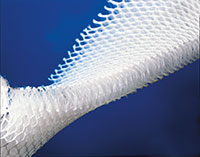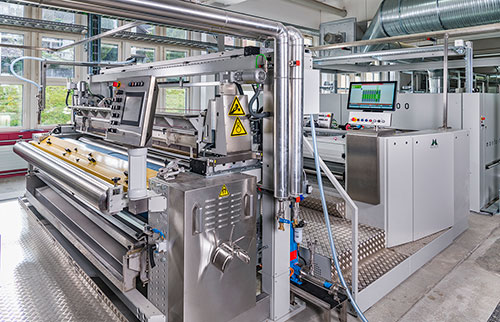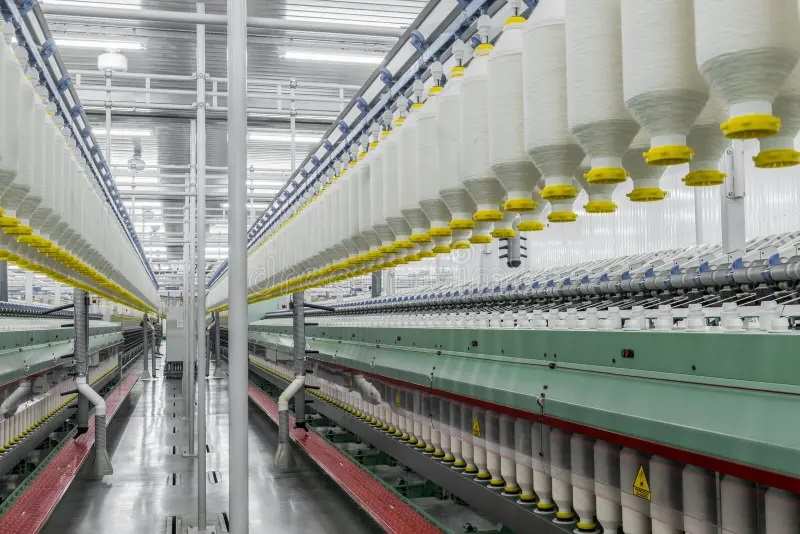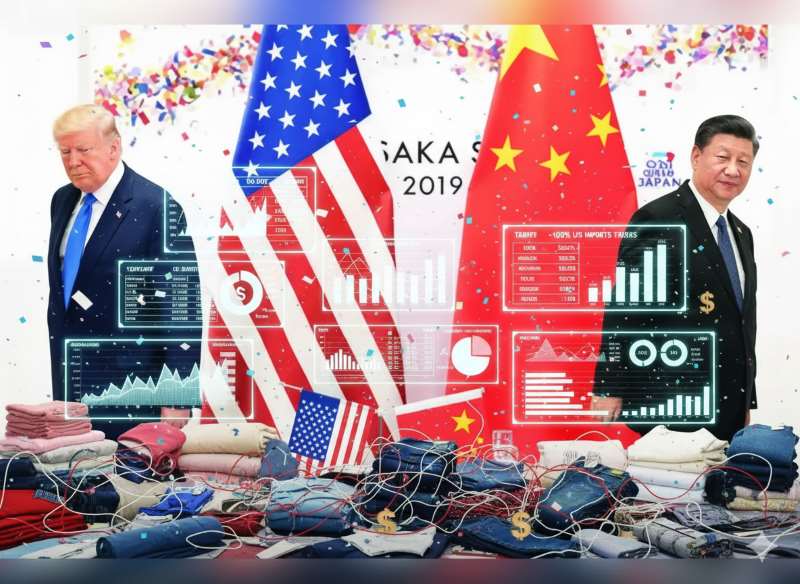FW
Cheap viscose yarn is being dumped into India. The going had been good for spinning mills as demand for manmade fibers, especially viscose fiber, had been grown for the past four or five years, both in the domestic and international market. But over the past nine months, the picture has changed dramatically. With low import duties for viscose yarn, global producers have started dumping it in India, hindering the business of domestic spinning mills. These mills are bleeding as they have to sell their viscose yarn at cheap prices. The global economic slowdown and trade disputes between the US and China have resulted in excess stocks of viscose products in the market and a sharp drop in prices.
The duty differential between the fiber, yarn and fabric of viscose is what is causing the dumping of yarn by other countries in India. While the import duty on viscose fabric is 20 per cent and that on viscose fiber is 18 per cent, duty on viscose yarn is only five per cent. Coupled with the cheap price of viscose yarn in the global market, the low import duty has prompted Indian weavers to prefer it over the yarn from domestic spinners and buy it from traders who import it in bulk from China or Indonesia.
The value added of US textile manufacturing increased 25 per cent from 2009 to 2018. The size of the US textile and apparel industry has significantly shrunk over the past decades. However, textile manufacturing is gradually making a comeback. Textiles accounted for nearly 70 per cent of the total output of the US textile and apparel industry in 2018, up from 58 per cent in 1998. Clothing accounted for 12 per cent of total US fiber production by 2012, suggesting non-apparel textile products, such as industrial textiles and home textiles, have become a more important part of the industry.
However, manufacturing jobs are not coming back to the US textile and apparel industry. From January 2005 to August 2019, employment in US textile manufacturing and apparel manufacturing declined by 44.3 per cent and 59.3 per cent respectively. However, improved productivity is one important factor behind the job losses.
The US remains a net textile exporter and a net apparel importer. Over 40 per cent of US-made textiles were sold overseas in 2018, up from only 15 per cent in 2000. Meanwhile, from 2009 to 2018, the value of US yarns and fabrics exports increased by 31.3 per cent and 43.6 per cent respectively.
The US has imposed a 25 per cent tariff on fashion and textile products from the UK. The clothing and textiles of the UK affected by the decision include wool, cotton and cashmere sweaters, windbreakers and jackets, men’s and boys’ suits, women’s and girls’ pajamas, women’s and girls’ swimwear, blankets and bed linen.
Tariffs will apply even if the UK leaves the European Union with or without a deal. They are part of the ongoing dispute between the US and the EU over subsidies granted to Boeing and Airbus. The UK feels the US has imposed significant tariffs on products that have nothing to do with the aircraft dispute. The US is a key non-EU market for the UK. The US is the third largest export market for the UK behind Europe and Japan. This will have a major impact on the UK knitwear industry. Leading manufacturers will be hit by these punitive tariffs and that will affect jobs and investment. The US consumer happens to have a great affinity with high quality British knitwear.
The US believes subsidies paid by certain EU member states to French aircraft maker Airbus harmed the US industry. In the dispute, which began in 2004, the United States argued that the EU gave Airbus billions of dollars of launch aid that resulted in an unfair advantage for Airbus.
Global framework agreements are being used to boost union organizing, collective bargaining agreements and social dialogue. They are becoming a stronger tool for improving labor relations in the supply chain and combating violence and harassment in the garment sector. Gender-based violence, and particularly sexual harassment, is prevalent in the industry. Most garment workers are women and many are young and migrant workers, who are not aware of their rights. They have little access to safe housing and transportation, while the fashion industry generates excessive overtime, low pay, and long working hours.
Global framework agreements are negotiated at a global level between trade unions and a multinational company. They put in place the very best standards of trade union rights, health, safety and environmental practices, and quality of work principles across a company’s global operations, regardless of whether those standards exist in an individual country.
Trade unions are essential in ensuring that the global framework agreements are implemented in the global brands’ supplier factories. The increase of unionization rate in supplier factories is key to enable trade unions to monitor the agreements and to ensure that workers’ rights are respected in the global garment supply chain. Global fashion brands like Asos, Esprit and H&M have signed such agreements.
Around 18 Italian companies will exhibit at Expotextil that will be organised from October 24-27 in Peru by Italian Trade Agency and ACIMIT. These 18 exhibitors include Arioli, Biancalani, Bianco, Btsr, Danitech, Ferraro, Itema, Lawer, Marzoli, Mcs, Ms Printing Solutions, Proxima, Pugi Group, Ratti, Roj, Santex Rimar Group, Stalam and Ugolini.
In Peru, the textile and clothing industry is one of the leading sectors of the local economy. In fact, the country is the world's leading producer of alpaca fibers. It also cultivates cotton, especially in the northern area of the country. The sector is also supported by government programs aimed at increasing the quantity and quality of products made in Peru.
The textile industry in Peru has already benefited, over the years, from the partnership with Italian textile machinery manufacturers. Peru is the fourth largest market for Italian sales in South America. In 2018, sales of Italian textile machinery in the Country reached a value of around 10 million euros. Moreover, in the first four months of 2019 Italian exports to Peru increased by 8 per cent compared to the same period in 2018.
"Monforts Textilmaschinen GmbH & Co. KG will showcase an extensive range of coating and finishing technologies for the production of nonwovens and technical textiles at the forthcoming Techtextil India exhibition. The exhibition will be held at the Bombay Exhibition Centre in Mumbai from November 20-22, 2019."
 Monforts Textilmaschinen GmbH & Co. KG will showcase an extensive range of coating and finishing technologies for the production of nonwovens and technical textiles at the forthcoming Techtextil India exhibition. The exhibition will be held at the Bombay Exhibition Centre in Mumbai from November 20-22, 2019.
Monforts Textilmaschinen GmbH & Co. KG will showcase an extensive range of coating and finishing technologies for the production of nonwovens and technical textiles at the forthcoming Techtextil India exhibition. The exhibition will be held at the Bombay Exhibition Centre in Mumbai from November 20-22, 2019.
Hans Wroblowski, Head-Denim, says, “India is a very important market for Monforts and there are exciting prospects ahead for Indian manufacturers of technical textiles, who are well positioned to capitalise on growth opportunities.”
“India has one of the largest working-age populations in the world and a complete textile value chain for both natural and synthetic fibres. In addition, its government has been actively promoting the growth of technical textiles through various programmes based on investment promotion, subsidies, the creation of infrastructure and the stimulation of consumption,” he adds.
natural and synthetic fibres. In addition, its government has been actively promoting the growth of technical textiles through various programmes based on investment promotion, subsidies, the creation of infrastructure and the stimulation of consumption,” he adds.
As a result, India’s Ministry of Textiles forecasts technical textiles in the country to grow by over 18 per cent annually to US$28.7 billion in 2021.
Monforts texcoat range includes high value-added technical products such as wide-width digital printing substrates, carbon fabrics for high-performance composites, filter media, flame retardant barrier fabrics and heavy-duty membranes.
The texCoat user interface is equipped with the unique Monforts visualisation system and the magnetic doctor blade has greater power reserves. Options include a carbon fibre-reinforced composite coating drum with a more scratch-resistant surface and maximum rigidity and remote control which simplifies exact adjustment for the operator.
Montex stenters in special executions are ideal for the drying and finishing of both technical woven fabrics and nonwovens and characterised by high stretching devices in both length and width.
Pakistan’s textile exporters are facing a difficulty because of a delay in refunds. They are facing liquidity and cash flow problems and are unable to fulfill their export commitments. Exporters were given assurances the new refund system would be user-friendly and refunds would be processed without human involvement. A refund system for five export sectors was introduced by which sales tax refunds for exporters were be paid within 72 hours. However this system is a very cumbersome and complicated process.
As of now only 0.15 per cent of sales tax claims have been approved. The industry says the sales tax percentage may be increased gradually for the five export sectors, if refunds are paid within the specified time. In addition exporters want an enabling business environment and a level-playing field. Pakistan’s textile exports remained flat during the first five months of the current fiscal year as the value-added sector couldn’t perform up to the mark despite the constant currency devaluation against the dollar. This export sector is the backbone of Pakistan’s economy and earns a major amount of foreign exchange and revenue. Besides, the sector is also labor-intensive and the largest employment provider and generator. Value-added textile exporters say they are battling for their survival in the global market due to costly inputs and high cost of manufacturing.
The Tamil Nadu government has issued an order on providing subsidy of Rs 2.5 crore to set up mini textile parks in Karur. The government would either bear 50 per cent of the cost for building basic infrastructure in the park such as laying of roads, setting up of sewage treatment plant and captive power plant, training centre or offer subsidy to the maximum of Rs 2.5 crore to the manufacturers.
The government aims to motivate apparel manufacturers to set up new units in the state, thereby increasing job opportunities in various process of textile making including spinning, weaving and marketing. These manufacturers will launch a Special Purpose Vehicle for these parks which will set up on 2 acre each. They will get a subsidy of maximum Rs 2.5 crore per park.
These mini textile parks would enable the garment manufacturers to set up various units at the same place. It would reduce overhead and transportation cost. Moreover, 50 per cent subsidy on building infrastructural facilities in the textile park would offer a great support to the entrepreneurs.
Bangladesh’s receipts from merchandise exports declined 7.3 per cent year-on-year. This is the second consecutive month export earnings declined. September’s earnings were also 7.78 per cent lower than the month’s target. The decline of exports in September was mainly due to the non-utilisation of full production capacity on the occasion of the holidays. A significant number of factories have also been shut down since February 2019, resulting in job losses.
Overall, export earnings in the first quarter of the current fiscal year declined 2.94 per cent year-on-year. Earnings from almost all major sectors, such as garment, leather and leather goods, and frozen foods fell. Garment shipments between July and September fell by 1.64 per cent. Earnings from garment shipments, which account for more than 80 per cent of national exports, were 11.52 per cent below the quarter’s target. Shipment of cement, pharmaceuticals, terry towel, ceramics and home textiles also performed poorly.
Shipments are expected to rebound as international retailers and brands are coming over with a lot of work orders because of the ongoing trade war between the US and China. Apparel retailers and brands are also coming to Bangladesh for the brighter image created through a lot of improvements at factories and strengthening of workplace safety.
The US is set to impose 25 percent duties on imports from the European Union (EU), including a considerable amount of apparel from the U.K. According to the UK Fashion and Textile Federation (UKFT), the list of products that will face a 25 percent tariff will range from cashmere jumpers to swimwear. This is in addition to the normal duties that will apply. They will be introduced on October 17, 2019 and will apply even if the UK leaves the EU.
For the year to date through July, the US imported $60.94 million in apparel from the UK, an increase of 9.83 percent from the prior-year period, according to the Commerce Department’s Office of Apparel & Textiles (OTEXA). Wool apparel imports rose 13.94 percent to $19.36 million. UK apparels already face among the highest tariffs charged on any product and adding more tariffs will inject more costs into the system which will result in reduced sales, higher prices or lost jobs.
The EU Trade Commissioner Cecila Malmstrom has termed these tariffs “short-sighted and counterproductive and expressed a desire to find a fair settlement.












